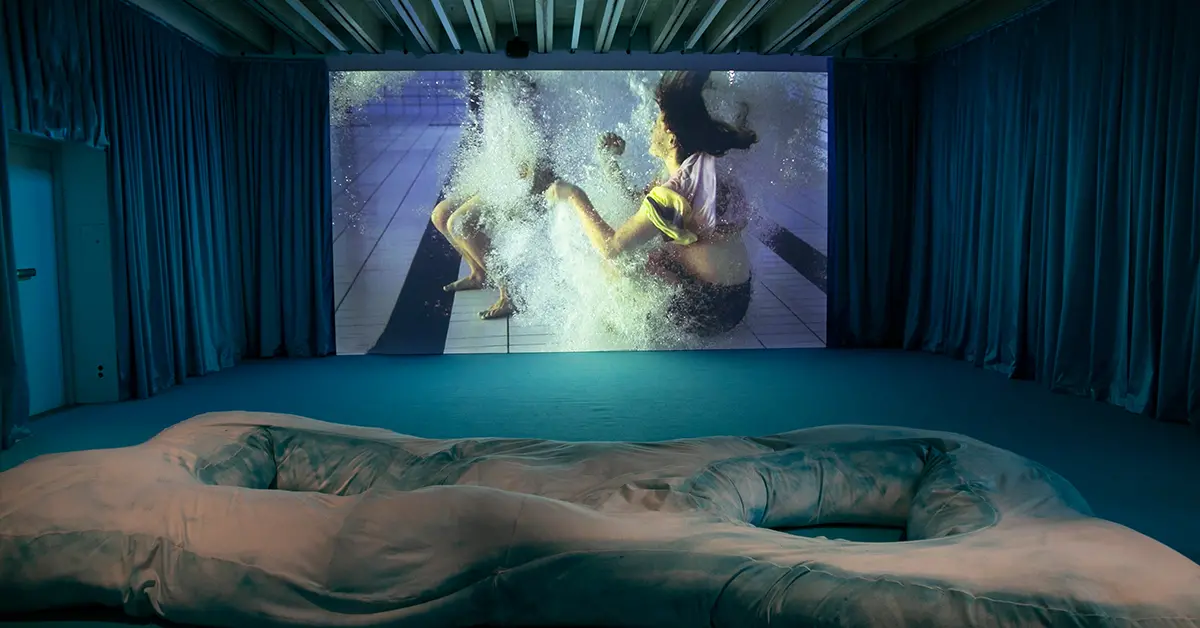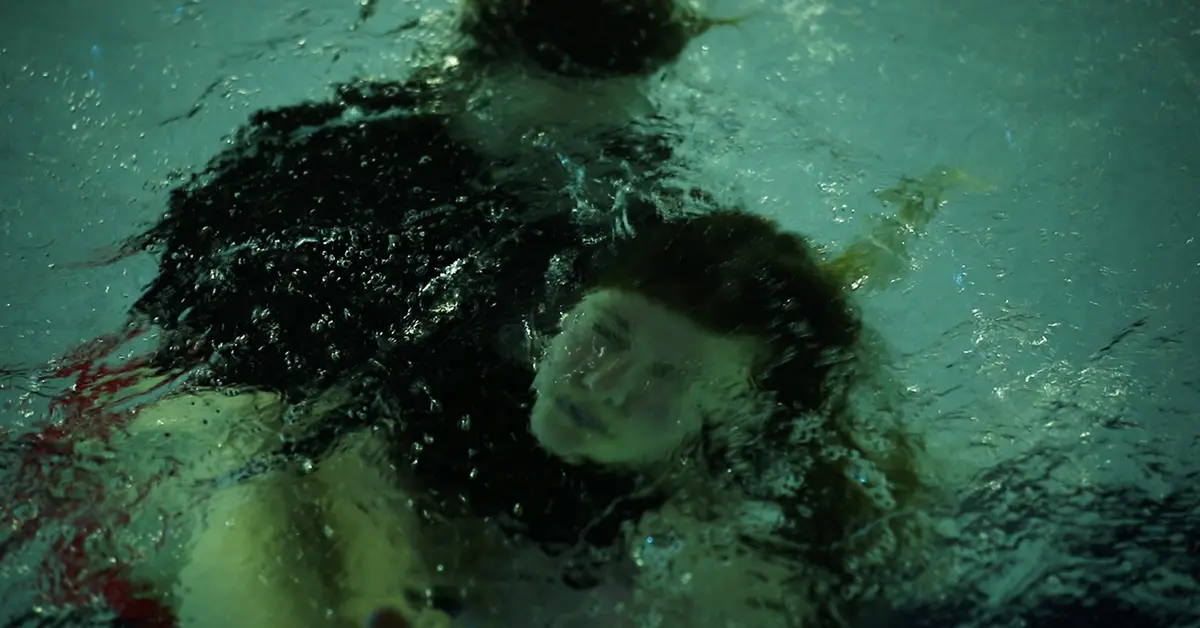
Alexandra Larsson Jacobson – We Play, I Push, You Hold, We Fall
Sidan uppdaterades: 23 april 2024
26 january – 19 may, 2024
A serious game
“Move from one end to the other, but don’t let go of each other.” That’s what an instruction can sound like when Alexandra Larsson Jacobson directs three young dancers in her film We Play, I Push, You Hold, We Fall, created for the installation at Konsthall 16. The title conveys tension and the alternating roles taken by the young women.
Dance has been part of Alexandra Larsson Jacobson’s life since she was very young; she started practising hard at the age of three, mainly classical ballet but also jazz and modern dance, and continued until she was nineteen. She then went on to study other art forms. After training as a professional photographer, she studied art, and her work gradually moved from still images to sculptures, performance, installation art and film.
Her background in dance has informed her practice in several ways, not least by awakening a massive interest in how we communicate beyond words, through our bodies. This has led to several collaborations with dancers and actors in works that explore relationships and boundaries through encounters with moving and stationary human and sculptural bodies. The endurance and physical control of dancers is a vital factor in several of her works, especially in the new one featured in this exhibition, where they move in water.
She is also inspired by dancers and choreographers. Among them, she particularly mentions Pina Bausch, who often worked with dancers from different generations, and Yvonne Rainer, who incorporated gestures and everyday movements in her choreographies. Representatives of other disciplines have also been important to her practice, such as the filmmaker Rainer Werner Fassbinder, with his surrealist and highly-charged settings, and the artist Magdalena Abakanowicz, who creates physically embracing pieces in fabric.
Uncertainty and ambiguity are recurrent in Larsson Jacobson’s works, along with physical and bodily elements. She also uses play as a tool for exploring boundaries. It’s a matter of being in control and losing control. In Unstable, a performance from 2015, a dancer played the role of a visitor who loses her balance and falls headlong several times during the evening, forcing the actual visitors to interact by catching and helping her. Harder, Softer, Slower, Stronger, a video work from 2020, is set in a private living room, in a fin-de-siècle flat, that is cinematically decorated with a glittering curtain, fragile porcelain figurines and a metallic sculpture, all in pink and blue lighting. In a continuous renegotiation of personal space, two young women seem to alternately wrestle and embrace in a symbiotic movement exploring play, tenderness and violence, with imperceptible shifts in the balance of power and the boundaries between the actors.
The design of the room and setting has always been crucial in Larsson Jacobson’s works. In the installation Over, Under and All Around, shown at Haninge Konsthall in 2023, the viewer is immersed in a magically shimmering space. Here, she created a room to interact with, and an environment where the viewer wants to remain, both visually and physically. The floor is covered with a reflective dance mat, giving the illusion of infinite space. The theatrical and moving lights add further plasticity to the space. Amorphous sculptures in shiny textile materials rotate slowly from the ceiling, illuminated by pink and blue spotlights, giving rise to wavy reflections on the walls. Large sculptures in silvery or spray-painted fabrics are scattered around the room, as places to rest or hide, or both, for children or adults who visit the exhibition. This work, again, builds on exploring the potential of play and imagination, in allowing kids to test the boundaries and offering adults a liberating change.
The new work created by Larsson Jacobson for Konsthall 16, We Play, I Push, You Hold, We Fall, is based on a script of movements and feelings, according to which she has directed the participants, resulting in a kind of filmed and edited performance. Revisiting themes she has processed previously, she introduces them to a new setting. The walls of the exhibition space are draped in shiny turquoise textile and the floor covered in turquoise carpeting, and in front of the back wall a film is projected on a huge screen. This time, the only scene is a dimly-lit indoor swimming pool, where three women dancers interact. The scenario is ambiguous. We accompany the characters above and below the water surface in seemingly improvised actions that oscillate between quiet friendship, lively games and animated wrestling where the line between play and unpleasant seriousness is blurred. The suggestive soundtrack, specially composed by Mira Eklund, changes according to whether we experience the film to be above or below the surface. Underwater, sounds are muffled, and vague whale-like noises enhance this mood, which is shattered when “we” come up for air. The speed also enhances the sensation of moving through water, as movements are slower below the surface. Various devices are used to evoke the dual nature of water as a place of play but also as a danger.
Early on, the three characters throw themselves into the pool. Submerged, arms and legs entwine in a chaos of bubbles. Both the body compositions and their clothing occasionally suggest the “wet drapery” of classical Greek sculptures. Gentle movements are followed by balancing and playing with floating sculptures made by the artist. The colour combinations used in these sculptures – red and white or yellow and black, the same as in warning signs – send a slightly disturbing message. Almost imperceptibly, a line is crossed, and the initial friendly playfulness turns into something more akin to a fight. Feelings run high, and the young women’s interaction fluctuates between friendship and antagonism. Although the serene ending is open to interpretation, the line markings of the pool in the background seem to form an ominous black cross.
With her installation We Play, I Push, You Hold, We Fall, Alexandra Larsson Jacobson steps away from the neutral white cube and invites exhibition visitors to immerse themselves in the environment she created. Enter the big blue, sink into the large, billowing sit sculpture and follow us down below the surface.
Ulrika Levén, curator

Sidan publicerades: 23 april 2024
